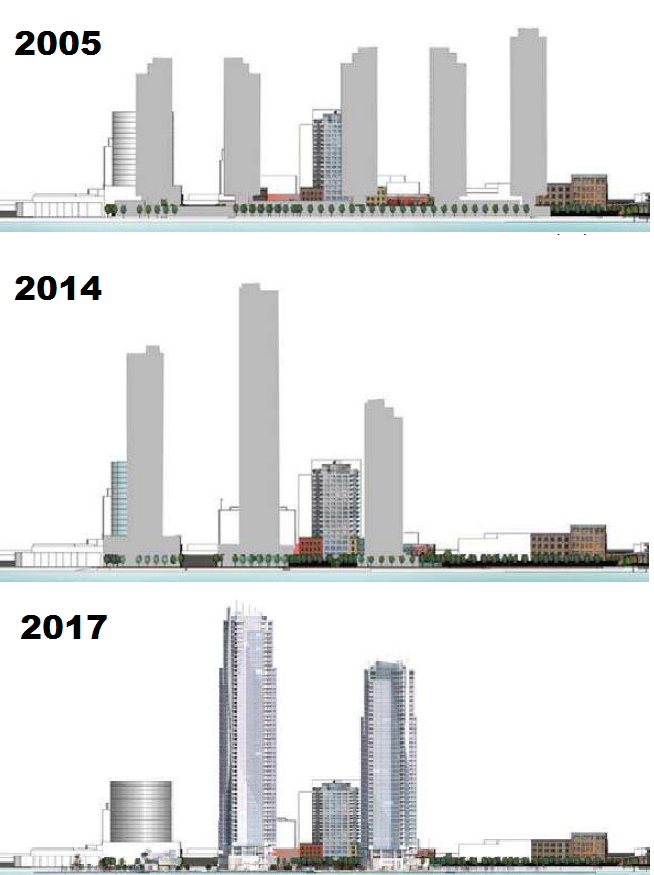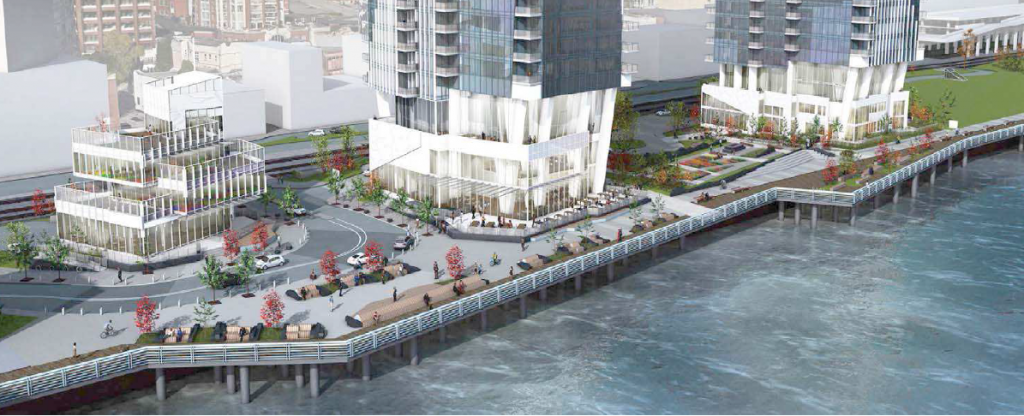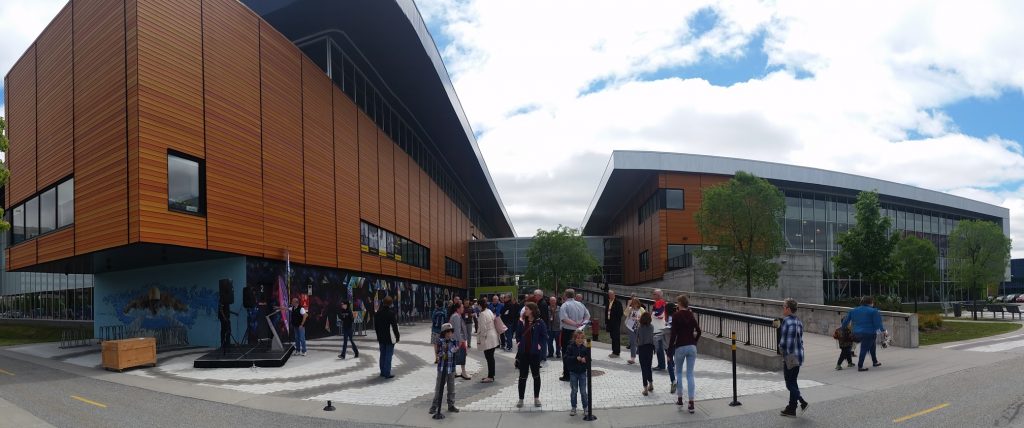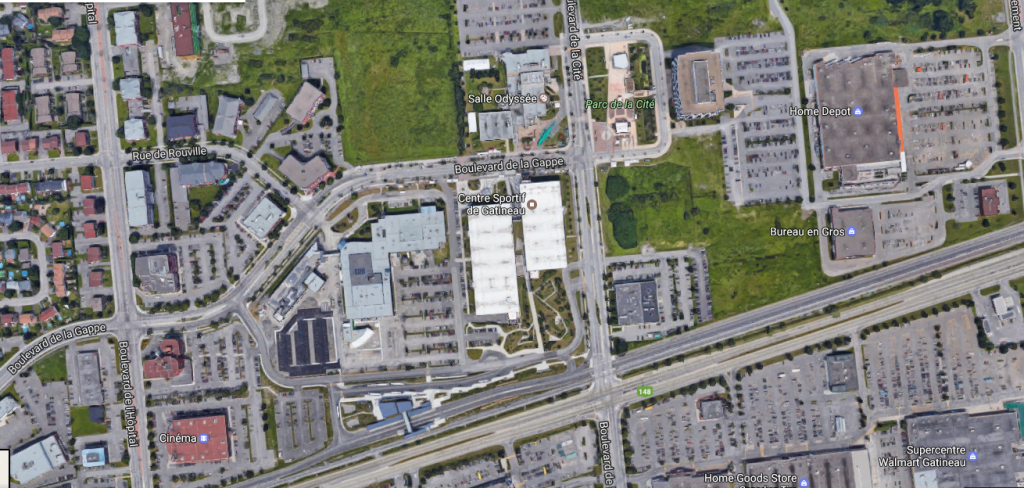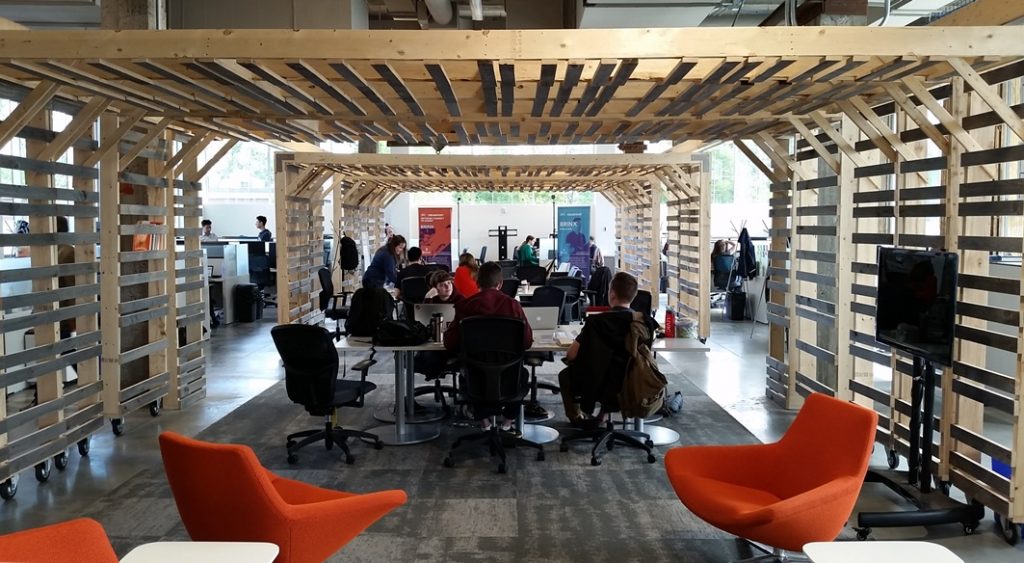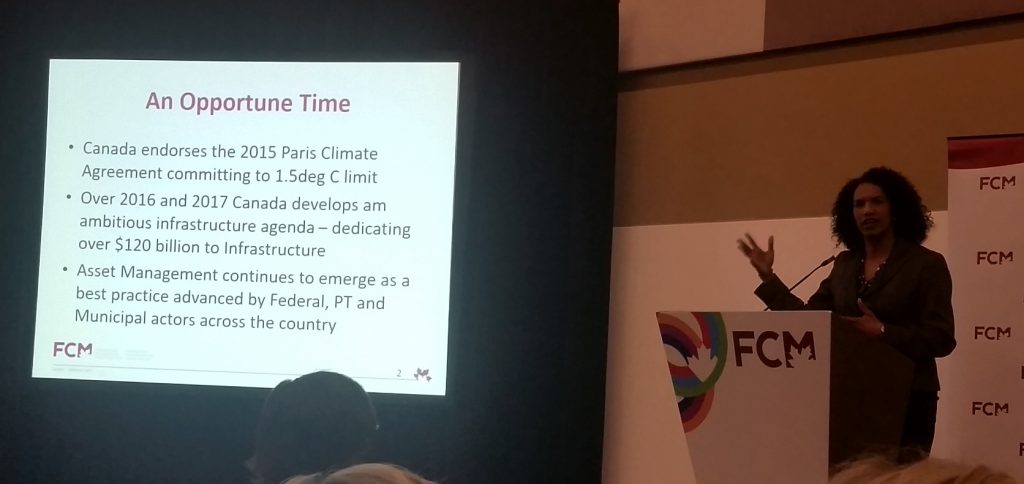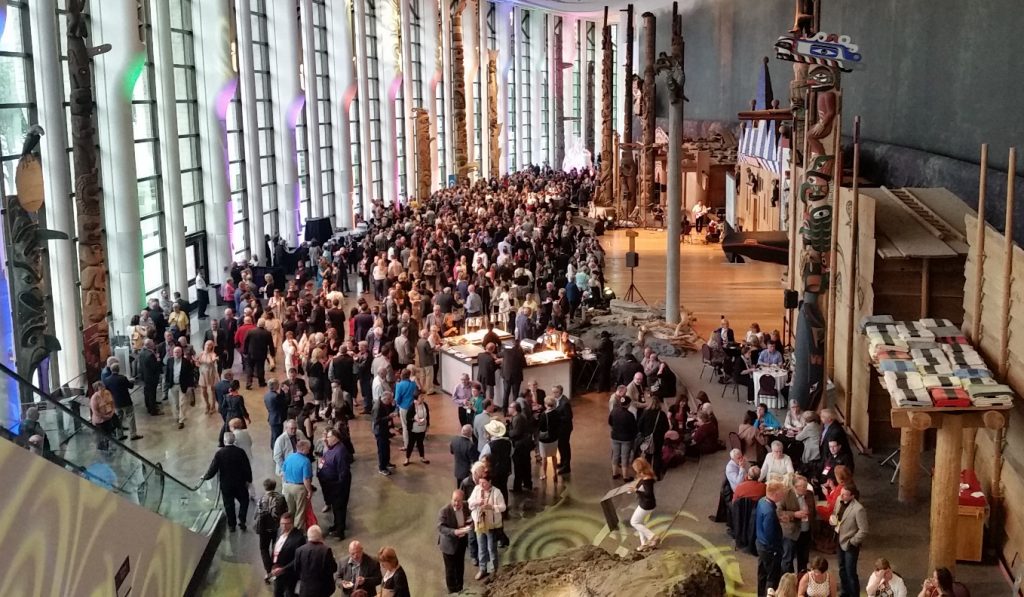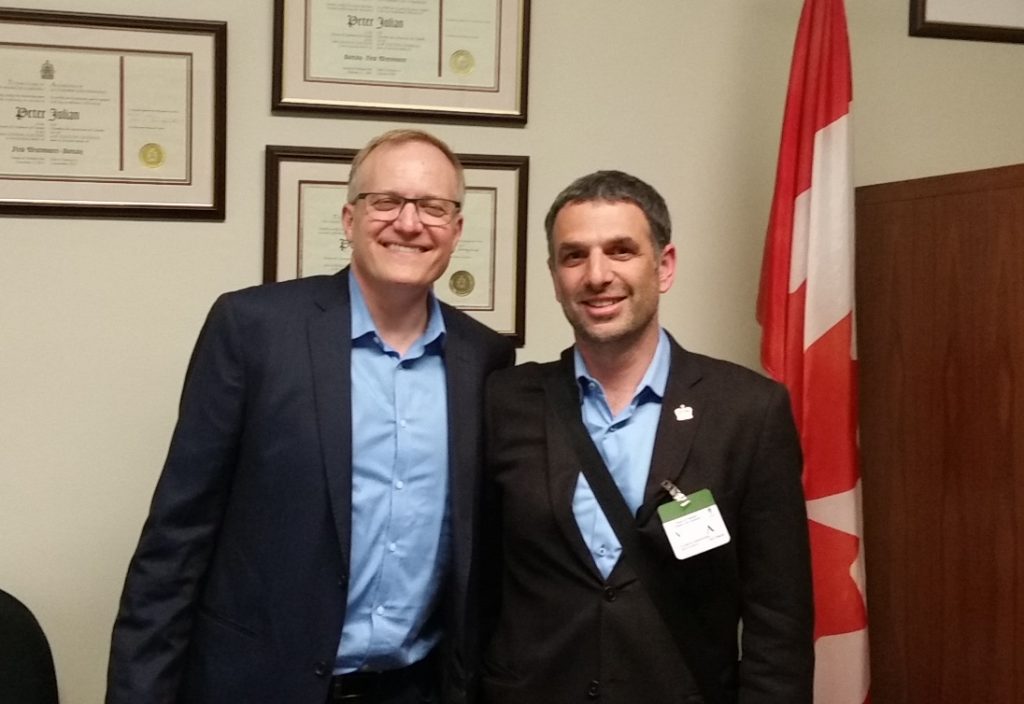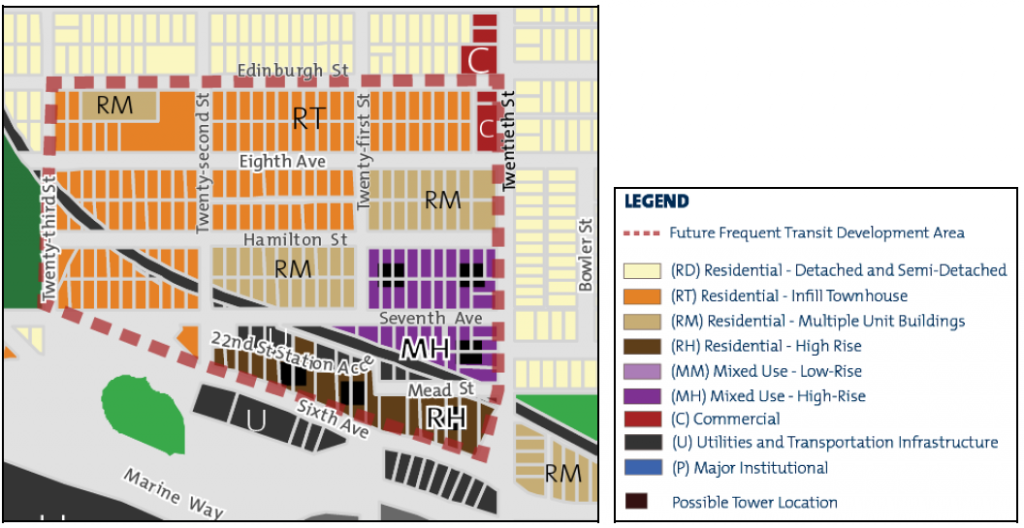The June 12th meeting seems so long ago, because the Public Hearing the following day seems to dominate the Council Agenda this week. However, we had a large Agenda, so I’ll get this report out first, and write more on the HCA later.
We started the meeting with an Opportunity to be Heard:
Development Variance Permit 00626 for 412 Third Street
This design for a single family home in Queens Park requires a Development Variance Permit because it is too far forward on the lot (by 7 feet) and too tall to fit in the current zoning (by 2 feet). These variances, however, are a result of the homeowner and staff working together to assure the City meets the Queens Park design guidelines and the construction of the house can accommodate the protection of mature pine trees on the property.
The current house was damaged by fire and provided a demolition permit during the Heritage Conservation Period, but their progress in building a replacement has run in parallel with the Heritage Control Period, which has no doubt been challenging for the homeowner and staff.
I am not concerned about the height variance, as it is minor, will fit in the context of the area, and provides a more livable secondary suite. The front yard projection is a bigger concern. It is, however, close to the front yard projection of the (restored heritage) house to the north. The house to the south was built quite a bit further back on their lot than the other adjacent houses, and the resident did show u to express concerns about this variance and the impact on their home.
We received some correspondence on this Opportunity to be heard, mostly in favour (including from the QPRA), and one opposed from the neighbour to the south. In the end, I was convinced the compromise made by staff and the homeowner balanced the various needs for the site, and Council voted in favour of granting the variance.
We had a single Report for Action:
Contemporary Art Gallery (CAG) Vancouver project proposal ,
A contemporary artist has an interesting proposal to activate the historic Simon Fraser bust on the boardwalk, at least to activate it on the geologic timescale sense. She intends to remove a 5-inch slice of the plinth, relocate that piece to the headwaters of the Fraser River, allowing nature to slowly, but inevitably, return the plinth to the lower Fraser River through erosion.
The Statue has an interesting history, and this may be an interesting way for the City to call attention to the statue, and re-enlighten a conversation about Simon Fraser, the colonial history of the Fraser River, and what the story of Simon Fraser has to say about New Westminster as a community, and as part of a Gateway.
Council voted to support the concept, noting that we need to put this proposal through a bit of a review with impacted First Nations in light of our recent commitment to the principles of reconciliation, but I think just opening this discussion will be a useful step in the right direction.
The following items were Moved on Consent without discussion:
508 Agnes Street (The Masonic Hall): Heritage Alteration Permit Application No. 100 to Allow a Reduction in Required Parking Spaces and a Revision of Exterior Design
The historic Masonic Hall building is being redeveloped, with a preservation of the historic façade (much like the Trapp building) under a Heritage Agreement from 2014. Unfortunately, some geotechnical issues were discovered during excavation and foundation work that will require an engineering response to preserve the structural integrity of the façade wall. The required reinforcement will take away 3 parking spaces. The owners are further requesting a change in balcony design to create a better profile and building envelope.
I’m not concerned about either change. The balconies are a design choice that is not fundamental to the HAP and the loss of three parking spaces in a dedicated rental building within a 200m of a SkyTrain Station in our compact downtown should not be a deal-breaker.
43 Hastings Street (Affordable Housing): Principles for Housing Agreement
This is the formal agreement between the City (as landowner) and the operator of a small Affordable Housing project in the east end of Downtown.
232 Lawrence Street: Official Community Plan Amendment and Rezoning Application for Child Care Facility
The City is working on a plan to use an empty City lot in Queensborough for a medium-sized childcare facility, recognizing the critical need for childcare in that neighbourhood. The plan has many details, including the requirement for an OCP amendment to allow this institutional use on a residential-zoned lot. Public consultation is beginning on this project, and it will go to Public Hearing in the Fall.
Financing Growth: Density Bonus Rates Update
Density Bonuses are cash payments made to the City by developers to allow increased density with new developments. These are regulated by the Local Government Act, and are generally earmarked to provide amenities wanted by the City. In New West, we divide up that cash this way: 30% towards affordable housing (like the Hastings Street project above), 10% towards child care (like the Queensborough project above), 10% towards public art and 50% towards general amenities like parks, civic facilities, and public realm improvements.
The City has not adjusted its Density Bonus rates since 2014, and the value of newly built density has increased 30% – 60% in that time (depending on the building type and location). This increase, and comparison to adjacent markets like Burnaby and Coquitlam suggests our density bonuses should go up between 50% and 140% in this accelerating market. This will require a zoning amendment Bylaw, which will see some stakeholder consultation.
900 Carnarvon Street (Tower 4): Construction Noise Bylaw No. 6063, 1992 – Request for Exemption
The tower being constructed at Plaza 88 will include a structural apron to stop things being dropped on the tracks and direct noise from the Skytrain away from residential areas. This work can only be done when the train is not running, which means at night, which requires a variance from our noise bylaw.
Advisory Planning Commission: Terms of Reference – Proposed Bylaw Amendment for Three Readings
About as small an administrative change as one can make to a Committee Procedure Bylaw, but a change it is recommended we make to clarify voting procedures for the APC.
Revised Union of BC Municipalities Resolution Related to Addressing Homelessness
This follows up on the report we received on May 15th regarding the 2017 Homelessness Count. After a few years where it looked like the region was beginning to reduce the rate of homelessness, there was a sharp spike in numbers this year. There are many factors here generally grouped under the “housing affordability crisis”, but we are also seeing reduced senior government support for people at risk of becoming homeless.
Despite the work we are doing in New West (arguably more than any other City in the region on a per-capita basis), we will not be successful without a regional response and senior government funding. Through the adoption of this resolution, the annual UBCM meeting in September gives us an opportunity to lobby the Provincial government to provide these supports.
2016 Statement of Financial Information
Here is the last piece of official financial reporting for the 2016 fiscal year. It includes a list of how much I got paid (and my expenses). My expenses are mostly for my participation in UBCM in 2016 (which I reported on here, here, and here) and for my participation in community events as per Council expense policy.
Civic Facilities, Road Maintenance and Park Development Temporary Borrowing Bylaw No. 7932, 2017
Moving from Fiscal 2016 to Fiscal 2017, the City has some ongoing projects in the Five Year Financial Plan that still require debt financing as laid out in the borrowing Bylaw of 2012, which expires in August. This Bylaw does not add to the amount of money borrowed, nor can we spend borrowed money on anything other than what was laid out in the original Bylaw, but only extends the time limit for the borrowing.
Overview of the Proposed 2018 Budget Process
Moving from Fiscal 2017 to Fiscal 2018, we will soon start on our next budget cycle. This report lays out the budget process and opportunities for public input to the Budget process. There is timeline from now to our May 15, 2018 budget filing date, so you can adjust your council delegation calendar to suit.
A good way to start is to look at the part of the report entitled “Budget Principles”. It gives a good idea of the order of priority the City gives to budget decisions, starting with departments benchmarking their level of service and being charged with finding internal efficiencies. Arguably, the “public participation” part of the budgeting process should come earlier and higher on priorities, and I would love to hear examples of the best way to make that input meaningful.
Dublin Street Boulevard Tree (1400 Block)
A resident came to complain to council last month about a rather un-neighbourly tree on public land adjacent to his garden. Our staff went to look at it, and decided it was indeed worthy of being replaced with something more friendly.
I suggest maple. Everyone loves maple.
Queen’s Park Washroom and Concession Building
The concession stand and washrooms at Queens Park are aged, barely functional, and due for replacement as per the Queens Park Master Plan. These are really heavily used facilities, and the concession actually turns a small profit. The designed replacement will improve the building, make the washrooms more comfortable and accessible, and will support the adventure playground, petting zoo, and other Queens Park amenities.
Restorative Justice Committee Recommendation to forward a resolution to the UBCM and the FCM that Criminal Education Faculties Incorporate Restorative Justice into Police Training
Another resolution for the City to take the UBCM, this one to ask for support in training Police to include principles of Restorative Justice.
The following items were Removed from Consent for discussion:
Green Building Policy Options for Civic Facilities
As I reported earlier, I attended a session at FCM that discussed the different certification standards that are currently being used across Canada for different types of civic facilities. Previously, Council asked Staff to report on updating our Green Building Policy to determine if our current practice of requiring LEED Gold is still appropriate. I am more convinced than ever that we took a leadership position at the time, but times have changed, and it is time to take a broader review of the numerous standards to determine which works best for each specific project.
Part of this report was to approve a high-energy-efficiency approach to the Animal Care facility, and I think that is an appropriate path (and I really don’t want to delay that project). Council moved to support this approach.
However, when it comes to a set policy for future buildings in the City, Council moved to hold off on adopting a standard practice until we can have a bit of a more fulsome discussion of how to go about selecting standards. Look for a future Council workshop.
2017 Spring Freshet and Snowpack Level
The river is rising. Snowmelt was late this year, and much of the snowpack in the Fraser catchment is now higher than average. Again, we do not expect a flood this year, but the forecasters are warning that the river could rise quickly, and will stay higher than normal later into June.
Car Trip Reduction Program Guiding Principles and Employee Transit Subsidy
New West is beginning to show regional leadership in our MTP in how we address regional congestion issues, and how we are working collaboratively with our neighbouring communities and TransLink to reduce the reliance of Single Occupancy Vehicles. I think that there is a time for a City to show operational leadership in this area. When we set goals for our community, to reduce Greenhouse gasses, to reduce waste, or on any issue, we should expect the City to act like a responsible corporate citizen, and do its part to help the community reach its goals.
How we perform our daily commute is a choice that has one of the biggest impacts on our environment, and on the sustainability of our community, and employers have a responsibility to provide access to a variety of commuting options. Free parking is a huge benefit to employees that many employers do not offer, and comes at a significant cost. However, people who choose more sustainable options receive no benefit from their employer. I think that encouraging transit use by our staff is a step in the right direction, and fully support this program as a first step in corporate Transportation Demand Management.
Assessment of Water Conservation Measures and Residential Metering
I would like to have a more comprehensive discussion of this report, as there is a lot here, so I might leave it for a longer stand-alone blog post.
Short version, we have asked staff to outline an enhanced enforcement plan for future water restriction seasons, especially one that ramps up as restriction stages increase. We have also asked staff to go the next step towards piloting residential water metering for single family homes, starting with voluntary users, but not to adopt a larger metering program until at least after Metro Vancouver completes their regional metering study. Finally, a wide suite of water conservation measures were presented in the report from the consultant, and we will hopefully Workshop these measures to go through some more detailed cost-benefit analysis.
So we are *starting* to ramp up our conservation measures, perhaps not as fast as some would like, but our pace is being moderated by the economics of the situation.
Municipal Finance Authority of BC (MFA) – Survey on Socially Responsible Investing
New Westminster was one of several local governments and MFA customers who asked them to consider providing fossil-fuel divested (FFD) investment options. The MFA basically said no, but provided this survey to determine interest in Socially Responsible Investing (SRI).
I think we should consider any SRI offered to us, as New Westminster in many other ways invests in social responsibility form our progressive approach to homelessness and our adoption of programs like the Age Friendly City Policy.
That said, I am not satisfied with the response on FFD. Their reasoning against providing this option to their members skated around the issues at hand, and could be summed up by saying “providing financial backing to the destruction of the biosphere is the only financially responsible way to act”. I cannot accept that.
This is about the future of our communities, and the planet we are leaving the next generation. We, at the local government level, are already at the front line in addressing the cost of climate change, and here we are saying that we cannot afford to invest in a way that takes the financial incentive away from the companies that profit from climate change the most. Again, I cannot accept that the local governments in BC, who are leading the world in climate change mitigation are being asked to find our own destruction. That is a pretty strong damnation of the economic system we are under. The MFA belongs to us, they need to do better.
Mercer Stadium Skatepark Relocation – Project Update
The City is working on planning a new Skatepark to replace the one at Mercer Field that will be removed as the new NWSS is built. The City’s ongoing consultation with skaters, punks, and other stakeholders has turned up some interesting responses:
“Access to Transit is 100% the most important consideration on the location” – rarely do we get as clear direction as that from a stakeholder group.
There is lots of good info being collected, including some terminology my lame 47-year-old vocabulary misses, but I am enthused that staff are taking such a proactive approach to building what the user group wants.
Proposed Public Realm Improvements to the Telus Plaza located at 611 Sixth Street
The City is partnering with Telus to improve the small public park area adjacent to the Legion in Uptown. I share Councillor Trentadue’s concerns about how smoking will be managed at this space. Generally, we don’t allow smoking in public parks, but this space is where the customers of the Legion go to have a cigarette, and if there is one exception to a rule, I have to give that exception to our Veterans at the Legion.
Queen’s Park Interim Gymnastic and Multi Sport Facility
We are working on the Canada Games Pool and Centennial Community Centre replacement project, and will be reporting out on progress soon, but in the meantime, we may find several synergies in a “temporary” building option to replace some of the Arenex programs (most notably, gymnastics, which need a large space). 24,000 square feet is more than twice the size of the Arenex, and gives us a lot of programing flexibility. We put out a press release about this proposal, read it here.
1111 Sixth Avenue (West End Methodist Church): Heritage Revitalization Agreement and Development Permit –
This is just a preliminary report on a proposal to build a larger childcare facility as part of a Heritage Revitalization Project at the Methodist church in Moody Park. Lots of detail to come here, and there will be a Public Hearing, so I’ll save my comments until then.
Finally, we wrapped with a series of Bylaw approvals.
Advisory Planning Commission Amendment Bylaw No. 7934, 2017
As discussed above, this Bylaw that changes the terms of Reference for the APC was given three readings.
Civic Facilities, Road Maintenance and Park Development Temporary Borrowing Bylaw No. 7932, 2017
As discussed above, this Bylaw that extends the date of the temporary borrowing Bylaw was given three readings.
Zoning Amendment (Accessory Caretaker Unit) Bylaw No. 7778, 2015
This Bylaw was given three reading back in 2015, and allows the integration of a Caretaker Suite into a planned industrial building in the West End. Council adopted the Bylaw, the Caretaker can sleep easily knowing she is in full compliance with the law.
And, really, that’s all any of us want, isn’t it?

 Judy Darcy saw the need for temporary support to prevent homelessness for a number of working poor in our community, and Nadine Nakagawa did so much of the work required to identify partners, get a team together, and push this project forward. Without their energy, and their passion for making New Westminster a more inclusive, sustainable community, this initiative wouldn’t have seen the light of day.
Judy Darcy saw the need for temporary support to prevent homelessness for a number of working poor in our community, and Nadine Nakagawa did so much of the work required to identify partners, get a team together, and push this project forward. Without their energy, and their passion for making New Westminster a more inclusive, sustainable community, this initiative wouldn’t have seen the light of day.